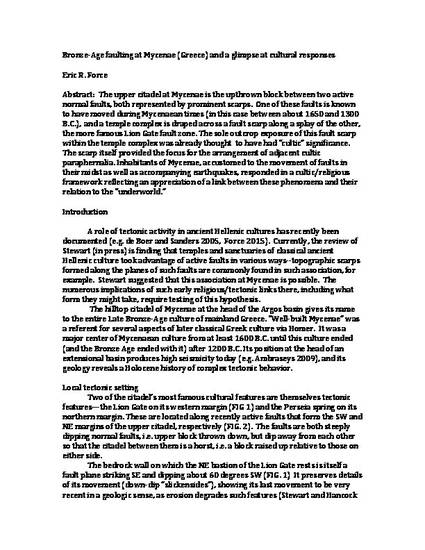
Unpublished Paper
Bronze-Age faulting at Mycenae (Greece) and a glimpse at cultural responses
(2017)
Abstract
The upper citadel at Mycenae is the upthrown block between two active normal faults, both represented by prominent scarps. One of these faults is known to have moved during Mycenaean times (in this case between about 1650 and 1300 B.C.), and a temple complex is draped across a fault scarp along a splay of the other, the more famous Lion Gate fault zone. The sole outcrop exposure of this fault scarp within the temple complex was already thought to have had “cultic” significance. The scarp itself provided the focus for the arrangement of adjacent cultic paraphernalia. Inhabitants of Mycenae, accustomed to the movement of faults in their midst as well as accompanying earthquakes, responded in a cultic/religious framework reflecting an appreciation of a link between these phenomena and their relation to the “underworld.”
Keywords
- fault scarp,
- Mycenaean religion,
- Temple Complex
Disciplines
Publication Date
Summer August 29, 2017
Citation Information
Eric R Force. "Bronze-Age faulting at Mycenae (Greece) and a glimpse at cultural responses" (2017) Available at: http://works.bepress.com/eric_force/16/